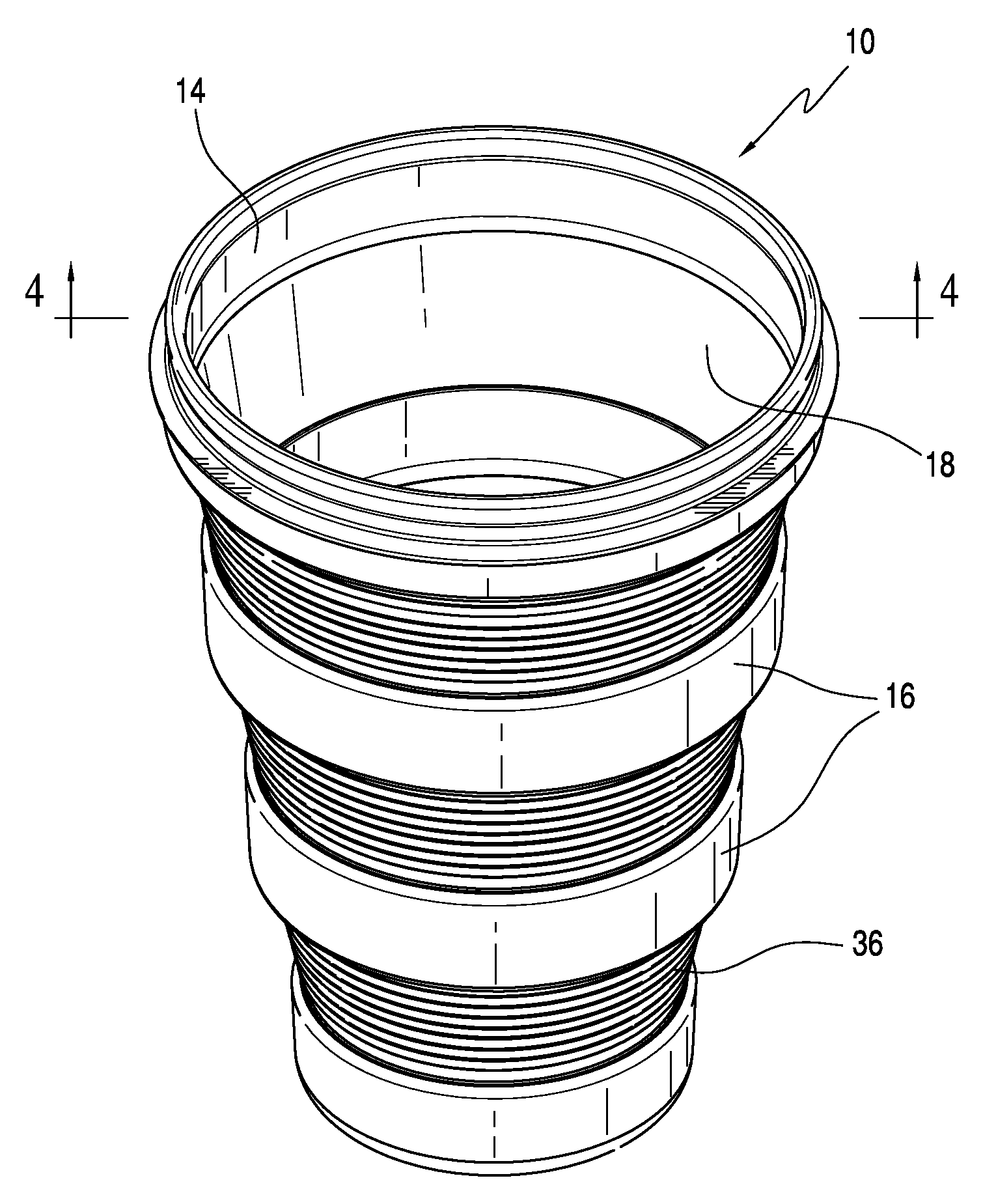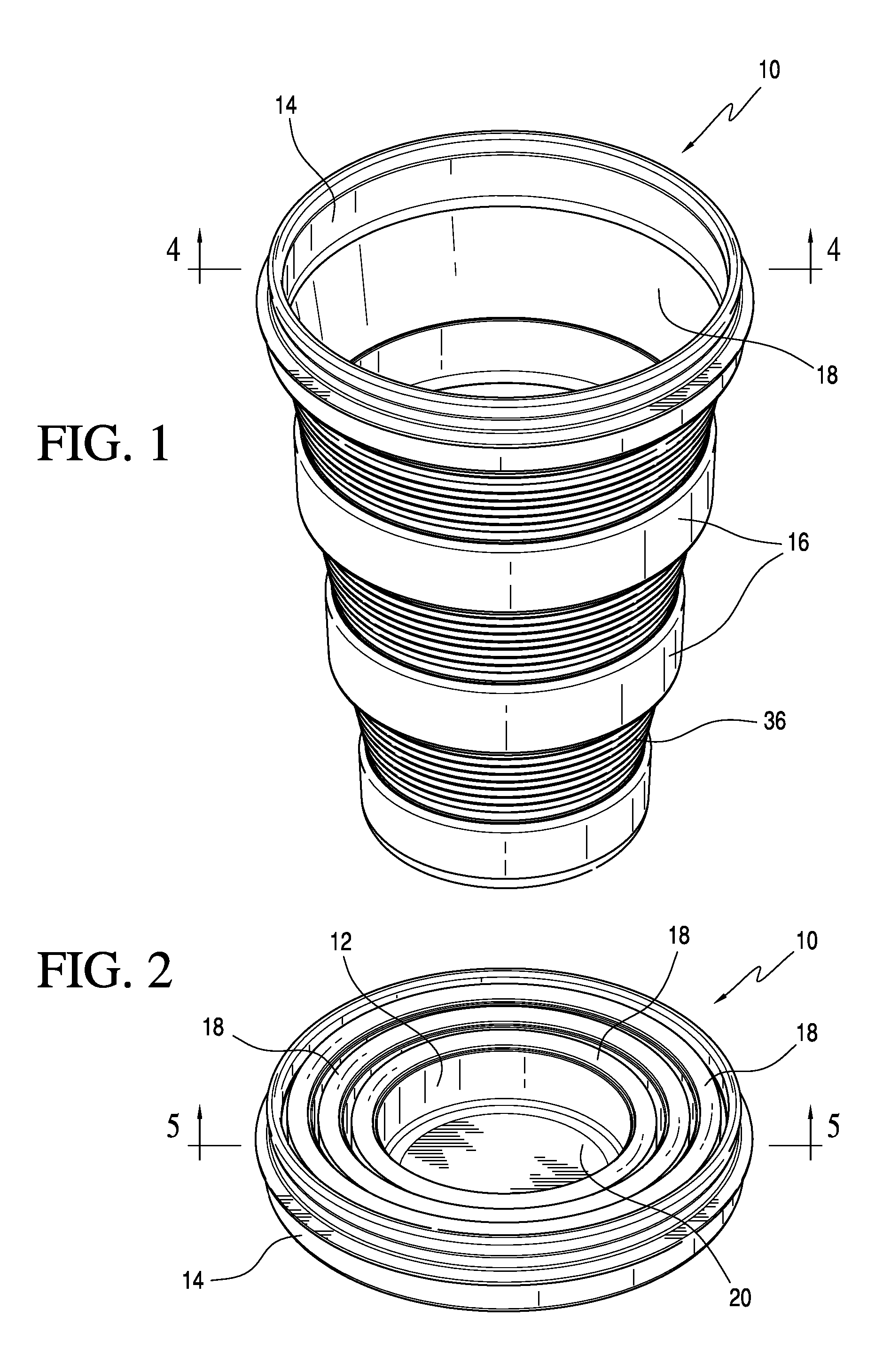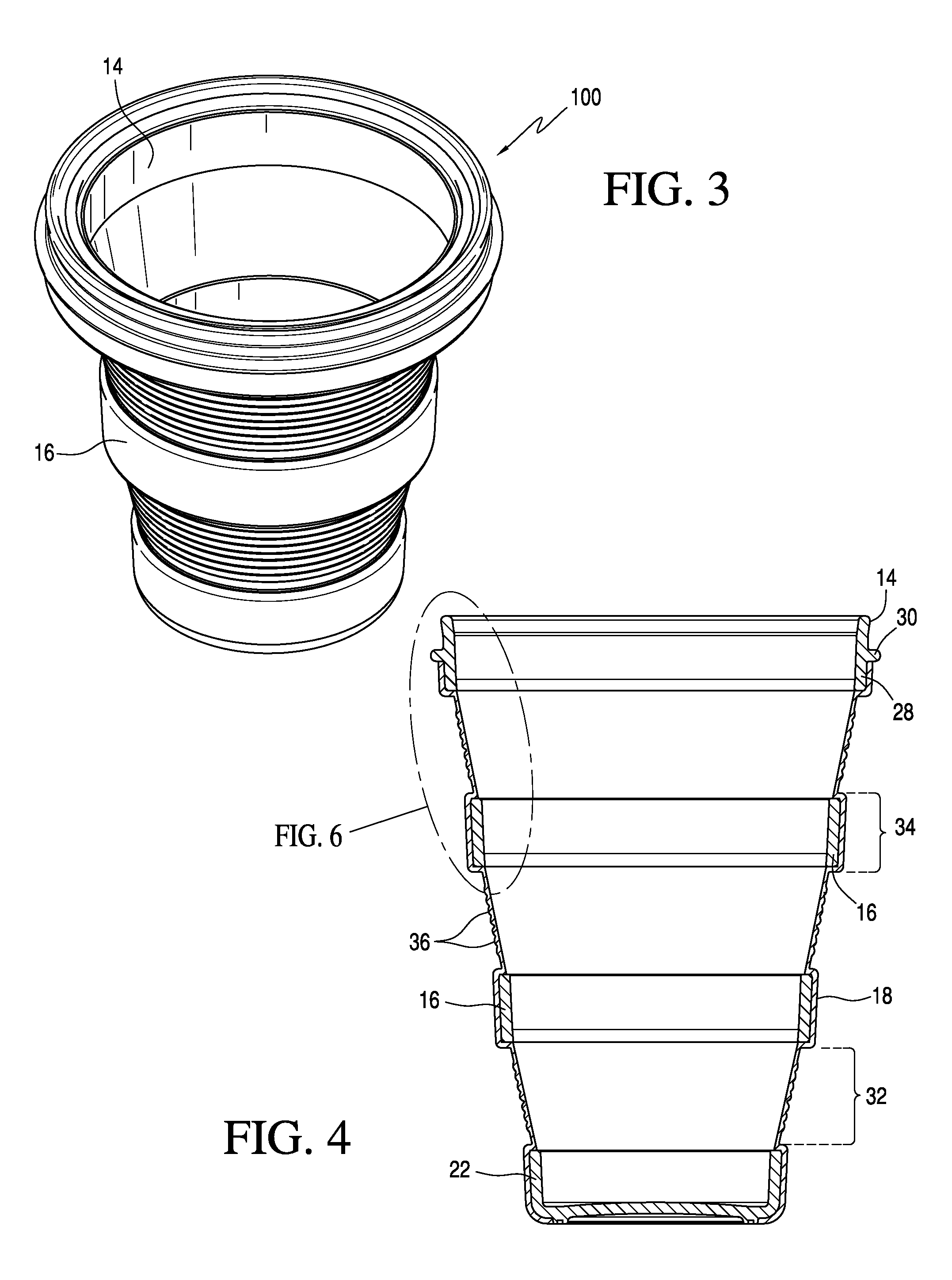Collapsible container
a container and container body technology, applied in the field of plastic containers, can solve the problems of increasing the amount of force required to collapse or expand the container to the point of being less practical to use, and the possibility of substantial leakag
- Summary
- Abstract
- Description
- Claims
- Application Information
AI Technical Summary
Benefits of technology
Problems solved by technology
Method used
Image
Examples
first embodiment
[0047]Referring now more specifically to the drawings, and with particular attention to FIGS. 1, 2 and 4, the collapsible container 10 comprises a base 12, a top ring 14, and a plurality of substantially rigid intermediate rings 16 disposed therebetween. The peripheral wall 18 of the container 10, which extends from the base 12 to the top ring 14, comprises a soft, flexible material that is over-molded to the base 12, top ring 14, and rigid intermediate rings 16, to form the collapsible container 10, as will be described more fully below.
[0048]In an alternative embodiment of the invention, only one intermediate ring 16 is present in the container wall (FIG. 12).
[0049]The flexible material of the peripheral wall 16 may also be defined as being pliable, bendable, and / or foldable.
[0050]The base 12 is a substantially rigid member including a flat bottom 20 and a peripheral upstanding base wall 22.
[0051]Referring now to FIGS. 11A and 11B, the base 20, which preferably may be slightly upw...
second embodiment
[0064]The collapsible container of the invention may also optionally include a foot 24, depending from the base bottom 20, which is preferably molded as a separate component, as shown in FIG. 11B, and then permanently secured to the base 12, for example by bonding or gluing. Optionally, the foot 24 may be integrally molded with the base, as shown in FIG. 11B.
[0065]Referring in particular to FIGS. 17 and 18, it will be noted that each of the flexible wall sections 32 includes corrugations 50A, 50B, 50C, and 50D, in the central area thereof which, in transverse cross section, comprise bands of flexible wall material of different thicknesses, producing a plurality of angled corrugations on the outside surface of the flexible wall sections 32.
[0066]As a result of the angular configuration of the living hinges from one side of the container to the other, the height of the corrugations above and below the upper 58, central 56, and lower 60 living hinges varies from one side of the contain...
PUM
| Property | Measurement | Unit |
|---|---|---|
| thickness | aaaaa | aaaaa |
| thickness | aaaaa | aaaaa |
| thickness | aaaaa | aaaaa |
Abstract
Description
Claims
Application Information
 Login to View More
Login to View More - R&D
- Intellectual Property
- Life Sciences
- Materials
- Tech Scout
- Unparalleled Data Quality
- Higher Quality Content
- 60% Fewer Hallucinations
Browse by: Latest US Patents, China's latest patents, Technical Efficacy Thesaurus, Application Domain, Technology Topic, Popular Technical Reports.
© 2025 PatSnap. All rights reserved.Legal|Privacy policy|Modern Slavery Act Transparency Statement|Sitemap|About US| Contact US: help@patsnap.com



